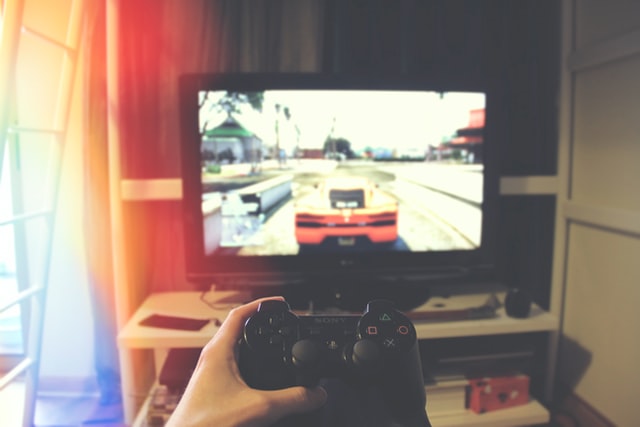Directing
The first principles concern the directing of the gamer experience. That’s right: it can and should be directed so that the game evokes the emotions the creators intended. These principles include keeping the focus of attention, creating elements of anticipation, and announcing changes.
Focus of attention.
The game should have a clear main storyline and core mechanics. Yes, there can be ramifications and additional mini-stories that add dynamism and help reveal the main theme. The challenge for the game designer is to keep the player’s focus on the main task/mission/goal throughout the game.
Anticipation
It is important to be able to alert the player to an approaching event, evoke emotion, and prompt a guess as to what will happen. Is the building in which the protagonist is staying planned to collapse? – You need to add appropriate sounds, short pulses of shaking of the structure. It’s not about a “This building is about to collapse” pop-up, it’s about creating a gameplay experience that helps you realize the near future.
Announcement of change.
And this is just about the pop-ups and other elements that speak directly to what has happened. The demonstration of the change takes place between anticipation and the event itself. “Mission Accomplished”, “Operation Failed”, “Collect 20 Coins and Get the Jackpot” – all such moments should be announced to the player. There is a rule: if the changes are repeated a hundred times an hour, the announcement is not necessary. But if over the course of the game this change happens at most 5 times, then visual clues are necessary. Exception – the passage/failure of the mission – here the notifications are always needed.
Behavior
In this paragraph, let’s look at the issue of conscious and intuitive player expectation. This applies not only to fundamental points such as game rewards (catch 10 ducks out of 10 – get a star), but also to the user interface and story.
Plausible events and behavior choices
All game events and character reactions must be logical, coinciding with the player’s expectations/perceptions. For example, a guardian (player character) earned popularity points by repelling attacks on the queen (i.e. has successfully completed past missions), so he was soon knighted.
Intersecting Events and Behavioral Options
To keep the game dynamic, it is worth including several parallel, non-contradictory events. If it is a story, you can include an additional story that was a consequence of the player’s previous choices. For example, the player’s character spared one of his enemies, and he promised to be his ally until he saved him from death. Thus, another character is included in the narrative for a while. In the interface this can be played through the instant addition of points for performing gameplay actions during the mission. And in the level design – through the ability to choose how to reach the goal.
Physics
To make the game more perceived and realistic, all interactions and movements in it should take into account the main physical properties of objects and the environment. For example, if the player’s character gets caught in the rain, make sure that his clothes at least slightly changed color because of the wetness. Or, if the player is floating in a rubber boat on a fast mountain river, think about how to show the wiggling, tossing of the boat from side to side and dragging it into the water currents in the most realistic way possible.
Progression. Step-by-step progression.
In an exciting game, it is important to maintain a sense of pace, rhythm, and urgency. Events should be distributed so that high-intensity scenes (like shooting, active combat, chasing, collecting artifacts in a certain amount of time) alternate with smoother ones that do not require the same level of concentration. At such moments, the player can “exhale”. For example, in The Last of Us episodes with shooting and running alternate with exploration locations. It is up to the player to decide how much time to spend searching for supplies and recovering from the chase, and at what point he is ready to move on.
Environment and space
It is important to adequately assess the scale of the game location on the device screen and take into account the spatial relationship between the main points. The player should easily move around the location to the goal, and all the strategically important objects should be in his sight (unless the contrary is intended by the plot). Interaction with other characters should also be logical.

